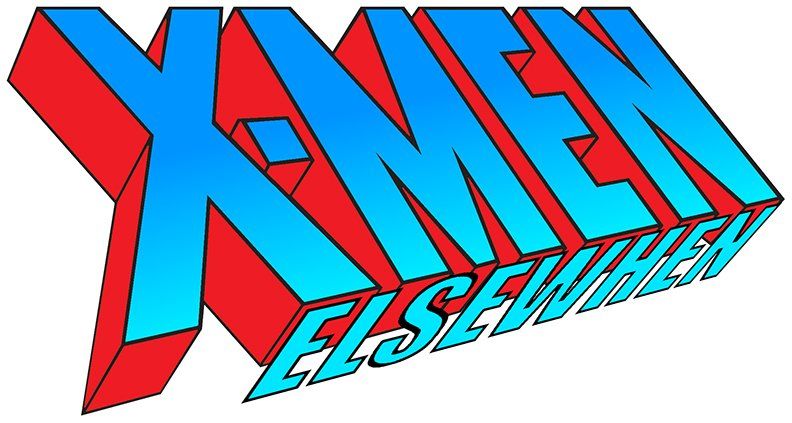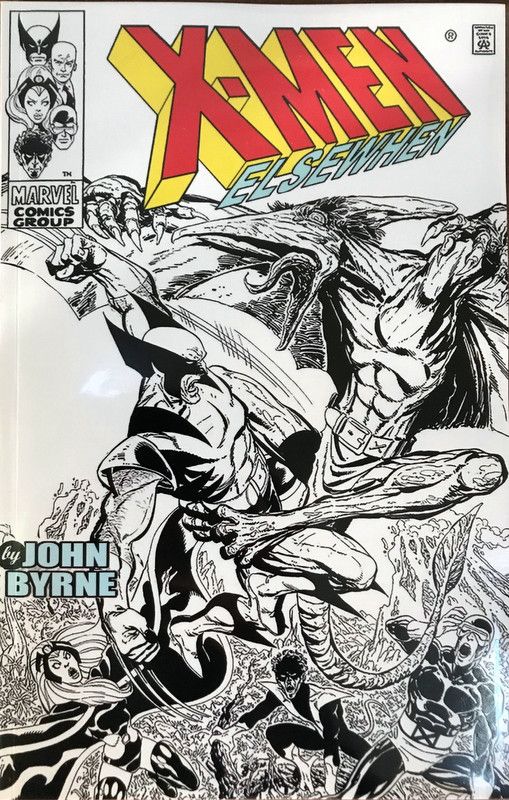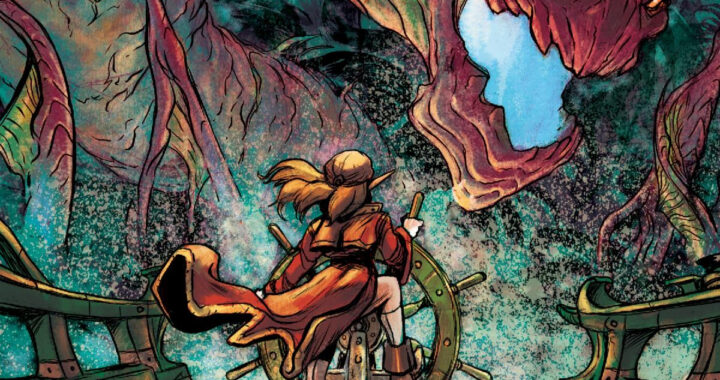
COMIC REVIEW: X-MEN: ELSEWHEN #1-29
 John Byrne’s history with the X-Men is a long, complicated, and involved one, contributing to greatness along the way. He was the artist on the series during the most legendary era of the book, in addition to being a co-plotter and a major contributor on those storylines. I’ve discussed Byrne’s time on Uncanny X-Men in my Retrospective of Claremont’s X-Men series, and I’d recommend reading those articles if you’re interested in those details. Of course, Byrne’s history with the X-Men goes beyond his time with Claremont, most notably on a title called X-Men: The Hidden Years, where Byrne filled in the gaps between the Thomas/Adams run and Giant-Sized X-Men #1.
John Byrne’s history with the X-Men is a long, complicated, and involved one, contributing to greatness along the way. He was the artist on the series during the most legendary era of the book, in addition to being a co-plotter and a major contributor on those storylines. I’ve discussed Byrne’s time on Uncanny X-Men in my Retrospective of Claremont’s X-Men series, and I’d recommend reading those articles if you’re interested in those details. Of course, Byrne’s history with the X-Men goes beyond his time with Claremont, most notably on a title called X-Men: The Hidden Years, where Byrne filled in the gaps between the Thomas/Adams run and Giant-Sized X-Men #1.
X-Men: Elsewhen began as an aborted project by Byrne at Marvel, similar to what Claremont did with his X-Men Forever series. However, when negotiations between Byrne and Marvel fell through, Byrne decided to create Elsewhen as a free work of fan fiction. Elsewhen explores an alternate timeline in the Marvel Universe, branching off with the end of the Dark Phoenix Saga. In the Elsewhen universe, the Dark Phoenix Saga ended with the original Claremont/Byrne ending that was shown in Phoenix: The Untold Story. Instead of sacrificing herself to save the universe, Phoenix was lobotomized after the X-Men lost their battle with the Imperial Guard. The issues are published as B&W pages, fully written, illustrated, and lettered by Byrne, and they are a fascinating read when taken as a whole.
What Elsewhen offers is Byrne’s vision of the X-Men in its pure, undiluted form, and that makes this series worth reading even if it’s not official or “in continuity”. The purity of that vision and Byrne’s passion for the material shines through on every page, and it’s clear that Byrne still loves these characters even after all these decades. Unlike many comics that are created a collaborative process, Byrne is involved with the story, art, and lettering, as he has been on many of his earlier books. It isn’t often that you find a comic series driven by a singular vision like this one is, and that gives Elsewhen a unique power of its own. Even on Byrne’s previous titles, there will be a collaborative effort behind it, usually involving colorists or editors, which is not present here. The result is arresting and hard to look away from, even when Elsewhen makes decisions that I might personally take issue with as a fan.
This purity of vision is the fanfic’s greatest strength, and at times, it can also be its greatest weakness as well. When Elsewhen does the X-Men right, it’s truly a fun experience in a way you don’t often see in modern Marvel books. On occasion, it’s even possible to see the spark of late 70’s John Byrne in certain panels or specific moments. Some of Byrne’s stories revisit past characters that he’d introduced at Marvel; it’s good, for instance, to see him reference Hidden Years or develop long-forgotten characters like Jahf. Many of these stories proceed from interesting ideas, such as Phoenix being regressed to the mind of a child or showing an alternate timeline where Magneto recruited the original X-Men after the death of Xavier. The stories also maintain the classic flavor of the 70’s-80’s brand of storytelling, keeping that blend of fast-paced action and character drama that made Uncanny X-Men as great as it was. When Byrne focuses on those things, Elsewhen is a riveting work of fanfic that will please old-school fans.
That having been said, Elsewhen also features some of Byrne’s excesses, most notably his tendency to try to “fix” things that aren’t broken. To be fair, that isn’t necessarily a negative here; the point of this exercise is for Byrne to display his unique vision of how he sees the X-Men. At the same time, even in a series like this, Byrne still reaches for the retcon button a few times, most notably with Magneto and Jean Grey. Some of it comes across as Byrne trying to correct lingering differences that he had with Chris Claremont, retconning Claremont’s ideas and interpretations out of his version of continuity. If you’re a fan of Magneto as a Holocaust survivor, you likely will not appreciate Byrne’s Magneto, which leans into the Silver Age version of the character. Likewise, his Phoenix storyline echoes some of the details used in Byrne’s story that brought Jean Grey back from the dead in official Marvel continuity. There are also very different takes on specific characters from their official versions; Kitty Pryde, for instance, is played as much more the impulsive newcomer, rather than the brilliant but immature and inexperienced prodigy that she was in the official comics. These changes are to be expected to some extent, given the out-of-continuity status of this series and that it’s Byrne telling his version of the story. However, fans of Claremont or X-Men fans used to modern X-comics should expect significant differences to what they’re used to. There are also moments where Byrne openly handwaves story elements he introduced and abandoned, in one instance even using a deus ex machina to heal Colossus after his leg is damaged. However, none of these issues are that significant in the scheme of things, and the goodwill the series builds overcomes any of its flaws.
Byrne’s art has taken criticism over the years since the early 80’s, which is generally considered his peak era as an artist. Some have even argued that Byrne’s style has downgraded since then. However, looking at Elsewhen, I don’t believe that criticism is entirely deserved. On a technical level, Byrne’s art shows signs of significant progression over the years, especially in terms of visual storytelling. Byrne still knows how to stage a scene visually, and in some ways better than he did back when he drew the X-Men for Marvel. Many of Byrne’s establishing shots are lovingly detailed, especially when detailing environments like the X-Mansion or the Shi’Ar throneworld. Byrne also displays excellent use of perspective and scale, giving dramatic emphasis to characters as appropriate. This is not to say that Byrne’s current artwork is flawless, however. The art does have consistency issues from time to time, particularly with respect to character anatomy. In some panels, the characters look oddly disproportioned or noticeably inconsistent with the way they’re portrayed in other scenes. There are also sometimes panels that look unfinished, though nothing that notably detracts from the overall visual effect. The pages read quite well, the characters are distinctive and visually recognizable even uncolored, and Byrne has not lost his touch as a storyteller.
X-Men: Elsewhen is a fascinating glimpse at John Byrne’s perspective of the X-Men, and it’s worth reading for that alone. If you want an idea of what Byrne might have done if Claremont had left the X-Men earlier, or where their points of difference are, you’ll find them in this fanfic. At the same time, there is a real passion for the characters and the Marvel Universe here, and Elsewhen tells its stories earnestly and effectively. If you’re interested in X-Men done in the classic style, or if you want an alternative to the current Krakoa direction, Elsewhen will provide that kind of X-Men story. Some continuity or character elements presented here may take some adjustment, especially for those grounded in the official canon, but these are largely acceptable, taken as an alternate timeline. Best of all, the fanfic is available for free, so you can experience it for yourself at no cost. I hope Byrne will continue to make Elsewhen stories for as long as he’s able to, because this is a take on the X-Men that is worth exploring further.
Score: 3.9/5
Writer/Artist/Letterer: John Byrne
Author Profile
- Steve Sellers had been a fan of superheroes ever since Superman: The Movie. But it took the JSA, the Legion of Super-Heroes, Dragonlance, Lord of the Rings, Twilight Zone, and Chris Claremont's legendary run on the X-Men to make him a writer and a longtime fan of comics, fantasy, and science fiction. Steve is the co-creator of WHITE DRUID & MICHAEL NERO and GUARDIANS OF ELAYIM for Omen Comics, and he is also the creator of BLITZ and SHOCKWAVE for Revelation Comics (an imprint of Omen Comics).









